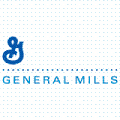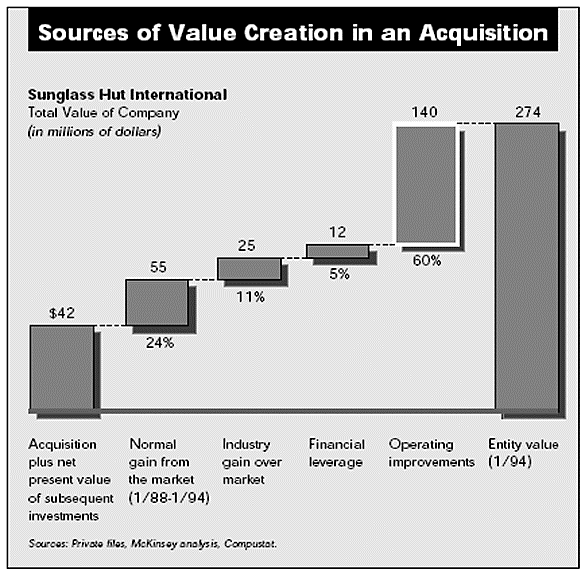Service objectives
The following list represents the Key Service Objectives (KSO) for the Appleton Greene Business Optimization service.

Profit Improvement
Profits and the required revenue to create these profits are two key measurements that indicate the health of any business. The challenge of any business is to achieve maximum profits from the revenue it generates. Profits are maximized when business capacity is fully utilized. In order for capacity to be fully utilized it must be balanced, meaning that the capacities of the sales, operations and finance functions are the same. Once these are in balance and capacity is fully utilized, incremental capacity increases can be made in each area to support profitable business growth. One of the most costly situations to any business is idle capacity. Excess capacity costs money, wastes resources and often creates workplace discontent. Most companies have excess capacity somewhere within the business and most companies have limited or constraining capacity somewhere within the business. The key to any profit improvement effort is to improve the processes that lead to the best, sustainable profit growth within a short period of time without creating a lot of disruption to current business requirements. The approach needs to grow the profits by making the whole business able to effectively reduce costs by making the processes within the business more efficient and to increase the capacity of the business to be able to handle higher revenue levels. Increasing revenue may increase the top line of a business but does not necessarily translate to increasing profits. In fact, focusing on just increasing revenue can create the opposite effect if profit improvement is not the driver behind the efforts to increase revenue. Improving profits through cost reductions alone can produce short term improvements but are limited when it comes to longer term business health. Again, the goal must be longer term sustainable profit improvement, and this has to come from a focused effort to improve both operating efficiencies and revenue.

Operating Efficiencies
One way to increase profits in a company is obviously to make that business more efficient so it produces higher levels of revenue at lower costs. This sounds very simplistic and intuitively apparent. However, before a business can operate efficiently the individual processes and systems within the business must be in sync and operating efficiently. In order to ensure that all processes and systems are in sync and operating efficiently, it is critical that each process and system operate effectively. Without first ensuring that a process or system is effective before making it efficient, the improvement effort will result in ineffective processes or systems simply becoming more ineffective. As processes and systems become more ineffective the business as a whole becomes more inefficient and costs go up and profits go down. The Business Optimization method forces people to look at the inner workings of a business. Looking at the inner workings of a business help people identify which processes or systems are missing and which are ineffective. After these are identified this method helps people develop and incrementally add missing processes and systems. It further directs efforts to first make ineffective processes effective and then make them more efficient. As more and more processes and systems are added or enhanced, the efficiencies of individual processes within a company improve. As these efficiencies improve so does the overall efficiency of the business. As the overall business operates more efficiently profits improve.

Revenue Growth
Another way to increase profits is to grow revenues. In order to grow revenues the business must have the capacity to produce the work required to achieve these revenues. Often times business owners or executives think that all they need to do is to produce more sales and profits will increase. This is not necessarily true, and in fact, the exact opposite often happens. In our model, a company is pictured as a series of connected sections of varying diameter pipe. The smallest diameter section is the bottleneck within the company. In order for a business to function properly, the amount of business that flows through the company must flow smoothly through the narrowest section. When flow is forced through a section that is too narrow, costs and operating disruptions go up. Waste, quality and delivery time issues, missed commitments, employee discontent, and the number of unsatisfied customers all increase. Therefore, in order to increase revenue properly and effectively, processes and systems within the business must be installed, enhanced or significantly changed in a way that gives a company the capacity needed to, not only effectively generate incremental revenue, but to generate this revenue in a way that produces incremental profits and business growth. To use the illustration of the above sections of pipe, each section must be close to the same diameter. If a section is too large, there is extra capacity in that part of the business and it needs to be better utilized by increasing the diameters in the other sections. If a section is too narrow, it is throttling back the entire business and its diameter needs to be increased. This is a continuous improvement process where the cost to increase capacity in one section is continually measured against the cost to maintain idle capacity in another and the impact the limiting section has on the overall business. Increasing revenues almost always is associated with increasing capacity somewhere within the business regardless of where the narrowest pipe section is located.

Employee Involvement
The heart and soul of any business is its people. Their skills in conjunction with the operating processes and systems are what create sales, produce and deliver products and services, and manage financial resources. The way employees are able to utilize their skills are seen in the way a business operates and the type of quality and service a company produces. When employees are restricted from properly using their skills, or they experience repetitive obstacles they become frustrated, anxious or angry. As frustration, anxiety or anger increase management time increases and focus is diverted away from the business of the business. Business performance suffers and customer satisfaction wanes due to quality and delivery issues. Almost always employee issues are caused by processes or systems that are missing, ineffective or inefficient. Employees are usually the best at seeing these issues because they experience them every day. Employees are a powerful resource and when involved can be made part of the solution creating a positive effect throughout the organization. The Business Optimization method involves employees at all levels throughout an organization. This develops shared visions and goals and creates teamwork and singleness of purpose with everyone involved. It is impossible to effectively manage people. Managers can only be effective at managing processes and systems. People are then managed by how they perform within established and defined processes and systems. Therefore it is critical that employees not only understand their role and where it fits within the business but that they become involved in the business optimization process. This way they become part of the solution as a team rather than part of the problem as individuals. When this happens, employee discontent significantly diminishes and business operations become smoother, more productive and easier to manage.

Leadership Development
Leaders are essential throughout any organization. Effective leaders at the top of an organization create a positive vision, culture and direction that everyone within the organization can rally behind. Effective leaders in middle management positions create confidence and loyalty in the people within their department. Effective leaders within the rank and file of an organization create strong teams that effectively identify and solve problems. The Business Optimization method steers an organization through the process of setting visions, goals and strategies, and then identifying and solving constraints within a business so that goals are accomplished. As visions, goals and strategies are set, and as constraints are identified and solutions developed, people with leadership tendencies emerge throughout the organization. A focus of the Business Optimization method is to mentor and train these people so that they become effective at leading groups of people. Owner(s) or top executive(s), middle managers and supervisors, and rank and file employees all require a different level of leadership skills. Leadership is different than management. Leadership is making sure the ladder is against the right wall and management is making sure the ladder is against the wall right. Whether a person is guiding a whole organization or a process improvement team, good leadership is needed. Therefore, one of the longer term and sustainable benefits companies receive from the Business Optimization method is the identification and develop of leaders throughout the organization.
Construction
The construction industry, as a whole is strong. There are geographical areas that are less strong and there are some that are extremely strong. Regardless, there are good opportunities for those companies that can price competitively, adhere to project schedules, and provide quality workmanship, while making high enough margins to maintain required levels of working capital. The construction industry can be broken into three main categories: Civil Engineering and Heavy Construction which include companies that work on large infra structure projects such as roads, highways, bridges, etc.; General Construction which include companies that build residential and commercial buildings; and Specialty Construction which include companies that have a special trade such as carpentry, electrical, plumbing and HVAC.
According to the Dodge Outlook Report and Robert Murray, Chief Economist with Dodge Data and Analytics, businesses are expanding and this is helping fuel the construction industry. Murray predicts “a rise in construction starts for commercial and institutional building accompanied by moderate improvements for housing and a stabilizing public works sector.” He further says that residential construction will be robust through 2019 and suggests that construction companies may want to take advantage of this situation now and into early 2017 because “it could be the time to go ahead with projects”. Unemployment in the construction industry is the lowest it has been since 2007. This is putting pressure on firms who are trying to hire. It is also putting upward pressure on salaries and wages. Though any size company can be impacted by these issues, the smaller firms are more vulnerable. Smaller companies have to compete against larger firms for employees. Their vulnerability comes in large part because they feel more and more pressure to provide health care benefits. These benefits are becoming more expensive and can add significant costs to an already cost sensitive and competitive situation. The smaller companies also face the challenges of understanding and being able to control miscellaneous expenses while maintaining adequate cash flow and working capital.

Consultancy
As the world recovers from the recent recession, the use of external consults is growing. As market demand increases in existing and emerging markets those companies that provide the highest value product and services will thrive. Those that do not will remain mediocre and slowly decline until they eventually go out of business. Many business owners and executives recognize this but struggle with how to effectively make the changes and improvements necessary to insure that their company is one of the ones that thrive. Most companies do not nor should they have a pool of available employees with the right expertise, time or ability to focus their efforts in areas other than their current responsibilities. Providing this expertise and focus is the major reason companies use external consultants.
Consultancies that are the most in demand are those that can help companies enhance business systems, improve efficiencies and reduce costs. These improvements allow companies to increase revenue, profits and market share as markets improve and as competition grows. Successful companies are those that provide higher value to the consumers of their products or services. This means having the right business systems, balanced capacities that are in sync with market demands, a thorough understanding of the market in which they compete, faster cycle times, better customer support, and higher product or service value than their competitors. The most cost effective way to accomplish the above is usually through the use of outside expertise or consultants. The right consultant can quickly help owner(s) and top executive(s) improve their business because they have an expertise and skill set that is usually missing in a company, they can relieve people within the organization from the need to focus on issues outside of their normal daily business requirements, and they can be engaged as long as necessary without the expense of hiring or firing. The right consultant not only produces “hard”, quantifiable results such as higher revenues, larger profits, and stronger cash flow but they also produce “soft” results such as improving the ease of operations and reducing stress of management and employee issues.

Consumer Goods
The Consumer Packaged Goods industry has had strong growth over the past 25 years due to new products and technologies. This has led to increasing margins and a high return to shareholders which has averaged 10% per year, outperforming the S&P 500. This is because companies have invested in innovation, supply chain efficiencies and cost reductions, R&D, Sales and Marketing, Procurement, Manufacturing, and Distribution. These investments have led to a 50% increase in the number of sku’s in just the past seven years. Past successes, however, do not guarantee future successes. Global demand, emerging markets, local production, and the impact from the Internet will reshape the way products are sold, produced and distributed. Companies that want to enter this market, increase their market share, or just maintain their position in the market will most likely need a different approach to their business other than what has worked in the past.
Over the next ten years the industry will see a billion new consumers in emerging markets, an increase in the number of consumers that purchase online, a growing number of consumers that are more interested in balancing price with quality and benefits, an aging population, and more volatility in the cost of raw materials. Companies that are able to increase their competitive advantage over where they are today will have the greatest ability to impact the industry. In order to do this, they will need to have the business capacity and systems that give them the ability to anticipate new opportunities and then take advantage of those opportunities as soon as they appear. Optimizing the way a business operates from understanding the market, to product and service development and positioning, sales, operations, and financial management will become even more critical than in the past. Those companies that do the best at balancing capacities, shortening cycle times, improving quality and perceived value, and having exemplary customer support will be those that impact the industry the greatest and will thrive from new opportunities.

Food & Beverage
The Food and Beverage industry is large and diverse. The focus of this article is therefore limited to the private label food processing companies since the needs of these types of companies align more closely with the Unique Service Proposition of this consultant. The demand for private labeled products has grown significantly over the past ten years and according to Con Agra, America is nowhere close to reaching a ceiling on this demand. Feedback from executives in this section of the industry suggest that leading companies are developing the mindset of being “first-to-market” and moving away from the traditional “fast-follower” game plan. This demand is due in large part to the increasing quality of private labeled products in conjunction with producers being able to price their products significantly below national brands. Grocers receive an average margin of 35% from private labeled store brands compared to an average margin of 25.9% from national brands. Studies from the Food Marketing Institute conclude that retailers are very interested and would “love to see continued growth in private label as the economy gets back on track”.
Many private label companies are small to mid-sized family owned businesses. The lack of capital and the many resources available to the larger national brand companies is a disadvantage to these smaller companies. However, being smaller gives the advantage of being able to shift gears more quickly than the larger companies. Larger companies tend to be more set in their ways and adhere more closely to their historical operating philosophies than smaller, more flexible companies. This flexibility will allow the smaller companies to take greater advantage of changes in the market place. The growing demand for private labeled products provides more sustainable future opportunities than did the boom-bust cycle of the past 30 years. Smaller food processors with excess capacity will have the ability to react quickly when they see an opportunity. Larger companies are looking to have greater capacity and flexibility through the use of smaller companies. This presents opportunities for smaller companies to produce both private labeled products as well as contract manufacturing for national brands.

Manufacturing
The manufacturing sector continues to focus on productivity and efficiencies. This trend will continue as manufactures increase their automation to reduce labor, look for more ways to outsource as a way to increase capacity and shorten cycle times without spending capital or committing to higher overhead costs, and form strategic alliances to optimize core competencies. Another trend that is developing is “reshoring” US manufacturing. Reshoring is when US manufacturers bring jobs that had been outsourced to other countries back to the US. The reason this is happening is because some US companies are experiencing higher than anticipated costs from foreign producers and logistical difficulties due to longer delivery times and communication issues. Understanding the nuances of the market place, customer needs, and operating requirements is critical to any company that wants to remain competitive. The most successful companies are going to be those that are able to align their business systems and product offerings with market requirements. Increasing automation to reduce costs, shorten cycle times, and improve consistency of quality and on time deliveries will remain top priorities.
A growing part of larger companies’ strategies is outsourcing through contract manufacturers or forming strategic alliances with smaller manufacturers for private labelling. Smaller companies that have a history of innovation, productivity, responsiveness, and success in meeting customer requirements are the companies with whom larger companies will want to align. Since businesses can only operate within their own system constraints, another important trend is the increase in companies using system analysis to understand more fully the areas that are creating cost, waste or capacity constraints. System analysis provides a deeper understanding of what makes a business function and what causes areas to underperform. The understanding that comes from systems analysis helps companies better predict output requirements, lower cost of goods and inventory levels, and improve product quality, technology transfer and regulatory compliance. Another benefit from system analysis is a better understanding of the whole supply chain which allows a company to work around issues that can develop from a natural disaster, thus minimizing the risk of business interruptions. Automation will bring a higher level of technical sophistication. Manufacturers will require more highly skilled technical service support to deal with increased complexity. This means that companies will have an increasing need for support services such as training, maintenance, and operational processes and services.
Bronze Service

Monthly cost: USD $1,500.00
Time limit: 5 hours per month
Contract period: 12 months
Bronze service includes:
01. Email support
02. Telephone support
03. Questions & answers
04. Professional advice
05. Communication management

SERVICE DESCRIPTION
The Bronze Client Service (BCS) for Business Optimization provides clients with an entry level option and enables client contacts to become personally acquainted with Mr. Erickson over a sustainable period of time. We suggest that clients allocate up to a maximum of 5 Key Employees for this service. Your Key Employees can then contact the consultant via email, whenever they feel that they need specific advice or support in relation to the consultant’s specialist subject. The consultant will also be proactive about opening and maintaining communications with your Key Employees. Your Key Employees can list and number any questions that they would like to ask and they will then receive specific answers to each and every query that they may have. Your Key Employees can then retain these communications on file for future reference. General support inquiries will usually receive replies within 48 hours, but please allow a period of up to 10 business days during busy periods. The Bronze Client Service (BCS) enables your Key Employees to get to know their designated Appleton Greene consultant and to benefit from the consultant’s specialist skills, knowledge and experience.
Silver Service

Monthly cost: USD $3,000.00
Time limit: 10 hours per month
Contract period: 12 months
Bronze service plus
01. Research analysis
02. Management analysis
03. Performance analysis
04. Business process analysis
05. Training analysis

SERVICE DESCRIPTION
The Silver Client Service (SCS) for Business Optimization provides more time for research and development. If you require Mr. Erickson to undertake research on your behalf, or on behalf of your Key Employees, then this would understandably require more time and the Silver Client Service (SCS) accommodates this. For example, you may want your consultant to undertake some research into your management, performance, business, or training processes, with a view towards providing an independent analysis and recommendations for improvement. If any research and development, or business analysis is required, then the Silver Client Service (SCS) is for you.
Gold Service

Monthly cost: USD $4,500.00
Time limit: 15 hours per month
Contract period: 12 months
Bronze/Silver service plus
01. Management interviews
02. Evaluation and assessment
03. Performance improvement
04. Business process improvement
05. Management training

SERVICE DESCRIPTION
The Gold Client Service (GCS) for Business Optimization is intended for more detailed evaluation and assessment, that may require your Key Employees to have monthly meetings or interviews with Mr. Erickson. These meetings and interviews can be conducted over the telephone, Skype, or by video conference if required. The consultant can also attend your business premises, an Appleton Greene office, or another mutually beneficial location, but please note that clients are responsible for the costs of any disbursements separately, including travel and accommodation. This service enables you to integrate the specific skills, knowledge and experience of your designated consultant into your Key Employee management team. The Gold Client Service (GCS) can also incorporate training workshops, business presentations and external meetings with customers, suppliers, associations, or any other business-related stakeholders.
Platinum Service

Monthly cost: USD $6,000.00
Time limit: 20 hours per month
Contract period: 12 months
Bronze/Silver/Gold service plus
01. Project planning
02. Project development
03. Project implementation
04. Project management
05. Project review

SERVICE DESCRIPTION
The Platinum Client Service (PCS) for Business Optimization is our flagship service and will be required if you need Mr. Erickson to facilitate the planning, development, implementation, management, or review of a particular project relating to his specialist subject, which would obviously require more time and dedication. This service enables you to reserve up to 12.5% of the consultant’s working month and provides a more hands-on service as and when required. If you need more time than this, then this can always be arranged, subject of course to the consultant’s ongoing availability. The benefit of having an external consultant involved in projects is they provide an independent perspective and are not influenced by internal politics, day-to-day responsibilities, or personal career interest. They provide objectivity, specific knowledge, skills and experience and will be entirely focused upon the tasks at hand. The Platinum Client Service (PCS) will provide your organization with a valuable resource as and when you need it.
Benefits
Management
- Improved profits
- Increased revenues
- Reduced costs
- Managed cashflow
- Shared vision
- Strategic direction
- Cohesive workforce
- Management techniques
- Leadership development
- Business systems
Human Resources
- Improved moral
- Team effectiveness
- Reduced turnover
- Solution ownership
- Consistent leadership
- Improved compensation
- Reduced uncertainty
- Improved communications
- Performance improvement
- Employee loyalty
Production
- Improved throughput
- Reduced waste
- Operating efficiencies
- Customer satisfaction
- Improved quality
- Problem solving
- Process improvement
- Capacity planning
- Output predictability
- Improved safety
Clients
This service’s current clients or employers include:

FilmTec Corporation
FilmTec Corporation is a subsidiary of The Dow Chemical Company and part of the Dow Water & Process Solutions business. They make high-quality DOW™ FILMTEC™ reverse osmosis and nanofiltration elements for a wide variety of industrial, municipal, commercial and home drinking water applications. Dow also produces DOWEX™ ion exchange resins, as well as a variety of specialty water separation products. Customers are primarily original equipment manufacturers of water treatment systems, engineering companies that specialize in the design and installation of water treatment systems, water service companies that operate water treatment systems for industrial and other water end users, and public and private water utilities. Dow Water and Process Solutions products serve a wide range of end users including power generation and semiconductor plants, chemical and process industries, municipalities, and other commercial and consumer customers. Dow Filmtec membranes are proudly made in U.S.A.
FilmTec Corporation – Click Here

General Mills
General Mills markets some of the world’s best-known brands, including Betty Crocker, Hagen-Dazs, Pillsbury, Green Giant, Old El Paso and Cheerios. Its brand portfolio includes more than 100 leading United States food brands. Its major business divisions include Big G cereals, which produces Cheerios, Wheaties, Lucky Charms and others; the meals division, which produces Progresso soup and Green Giant vegetables; the baking products division; the yogurt division, which offers Yoplait yogurts; the Health Ventures division, the bakeries and foodservice division and the international division. General Mills traces its roots to the 1860s and a pair of flourmills on opposite banks of the Mississippi River in Minneapolis, where the company remains headquartered. General Mills maintains production and distribution facilities throughout the U.S., including one in Cedar Rapids, Iowa.

Bross Construction
Chester Bross Construction Company has over forty years of general paving and construction experience ranging from interstate highways to municipal streets, parking lots and driveways throughout the Midwest. In addition to this experience it has the capabilities to handle any construction project from start to finish including excavation, asphalt paving, concrete paving, curb and gutters, cold-milling, diamond grinding, profiling, culverts, bridges, structures, surveying, playground rehabilitation, and much more. Chester Bross Construction Company was founded in 1966 and is an award winning general contractor in the construction industry. From driveways to highways, it performs a wide variety of construction activities throughout the Midwest. It owns several companies including: C. B. Asphalt, Inc., which manufactures asphalt products for public and commercial projects through the use of both portable and stationary asphalt plants and is able to produce high volumes of asphalt products in close proximity to project locations at competitive prices; C. B. Equipment, Inc., which is responsible for procuring the highest quality construction equipment on the market for utilization by its affiliated companies and is also actively involved in the sale of quality pre-owned construction equipment; Mark Twain Redi-Mix, which manufactures and delivers quality redi-mix concrete and related products to commercial, residential and public projects from its conveniently located stationary and portable redi-mix plant facilities; LWK Trucking Company, which provides reliable interstate and intrastate trucking and freight services to a wide range of construction related customers and can handle the hauling needs for general contractors, aggregate suppliers and producers of bulk commodities; and Hannibal Concrete Products, which produces high quality pre-cast concrete structures such as septic systems, tornado shelters, manholes and inlets for general contractors and individuals.
Bross Construction – Click Here

I.S.T.R.C, Inc.
The I.S.T.R.C. concept of developing a better understanding of the physical properties of sand-based greens, push-up greens, and athletic fields started in the spring of 1991. Working with hundreds of courses throughout the U.S., including 6 of the top 10, I.S.T.R.C. has built a strong database of information and knowledge. Its main objective is to provide superintendents with the information that not only identifies greens/athletic fields’ physical properties, but also provides the necessary information to be proactive in regards to cultural practices that affect the turf. Over the years, the premise of annual monitoring has become a staple in superintendents’ programs throughout the country. Members of the I.S.T.R.C. staff are available for on-site visits involving core sampling and video camera work for locating drain lines and drain line inspections. Superintendents have found this tool to be very helpful in assessing the need for renovations or adding more access points to better cool the greens during summer months. In some instances, when clients wish I.S.T.R.C. personnel to be on site to take samples or go over a previously written report they are able to accommodate that request. Normally, these tasks are able to be performed by one person and should be able to be accomplished in a day.

SRM
Stormwater Risk Management Inc. (SRM) provides a proven A-to-Z stormwater compliance management system that empowers its clients to protect their projects and their bottom line, turning the risk associated with regulatory non-compliance into positive results. SRM’s compliance management program is the most effective, streamlined way to manage stormwater compliance. Its four-pronged approach is the only comprehensive stormwater compliance program on the market today that empowers constructors to develop internal compliance experts. SRM’s expert consultants provide inspections and audits, guidance, training, and reports to help its clients easily identify and virtually eliminate enforceable regulatory findings, no matter what state a client’s project is in. From SWPPP design to Regulatory Response assistance, its personnel have a wide range of industry experience that helps its clients to quickly master stormwater regulatory compliance. There is no stormwater compliance training that compares with SRM training. Advanced Course students gain the knowledge to successfully implement SRM’s complete compliance system in the field. Its website training resource reinforces the classroom course. Further training is built into each step of SRM’s intuitive digital compliance tool. SRM developed the industry standard Uniform Stormwater Management System (USMS™), a 4-step, stormwater-targeted version of an Environmental Management System. Paired with ComplianceWise, a robust digital tool to manage a client’s USMS™, stormwater compliance becomes simple. ComplianceWise created a customized version of their stormwater system to support SRM’s unique USMS™ methodology. Stormwater professionals appreciate the comprehensive and accurate compliance evaluations ComplianceWise offers, while the built-in training and guidance makes even a novice become an expert.
Locations
This service is primarily available within the following locations:

Dallas TX
Dallas is part of the Dallas Fort Worth (DFW) Metropolitan Area which includes about thirty surrounding municipalities. The headquarters of nine corporate Fortune 500 companies are located in Dallas and 21 are located within the DFW region. These companies include Texas Instruments, Kimberly Clark, and Southwest Airlines. The metropolitan area is now the fifth largest economy in the United States. The main industries of the area are banking, commerce, telecommunications, technology, energy, healthcare and medical research, and transportation and logistics. It contains the third largest number of Fortune 500 company operations in the nation and includes the Dallas Federal Reserve Bank, operations centers for JP Morgan Chase, Citicorp, and Capital One as well as major distribution centers for Amazon, Frito-Lay, Whirlpool and Walmart. It is a transportation center and is considered a major inland port because of the number of major railroads, highways and the Dallas/Fort Worth International Airport, which is one of the busiest in the world. It is where the Slurpee, the integrated circuit, the single-chip microcomputer, and Liquid Paper were invented. Because of local government fiscal policies and management practices it is considered one of the best run counties in the country and has one of the lowest property tax rates in the State. It is also one of only a few counties in the United States to have a “AAA” bond rating from both Moody’s and Standard & Poors. Its economy is strong and its job growth is projected to be solid along with housing and office demand. Over the past decades the area has diversified away from its dependence on the petroleum industry which means that its economy is not significantly influenced by what is happening in the oil and gas sector. However, low energy prices and the strengthening dollar have and continue to negatively affect prices, particularly in manufacturing. The Dallas Fed’s Texas Business Outlook Surveys in November showed prices falling in manufacturing for the 11th consecutive month and weak price growth in services. The county participates in tax increment financing areas and provides strategic tax abatements. It offers a “Freeport tax” exemption on goods shipped outside of the State if shipped within 175 days of production. One fourth of the population is foreign-born and the area is considered one of the best places for both retirees and college graduates.

Denver CO
Denver, known as the “Mile High City” with an elevation of 5,280 feet above sea level (a step leading to the capital has a marker indicating that it is exactly 5,280 feet elevation) is a manufacturing, distribution and transportation hub that serves the western region as well as the United States as a whole. In addition, many companies that are engaged in the research and development of alternative fuels are located there. The metropolitan area is the 18th largest economy in the United States which is based in part by its location and major transportation systems that go through the area. It is home to companies in diverse industries which include some of the fastest growing companies in the United States and the world. A few of these are Altitude Digital Partners, The Premier Group, Rivet Software, Smashburger, Whiting Petroleum and Chipotle Mexican Grill. Some of the larger growths in employment are coming from Lockheed Martin, United Airlines, Costco, Comcast, Transamerica, and Mapquest, which is headquartered in the area. Denver Metropolitan Area is made up of a young labor force that is highly educated. Denver Metro has the second highest percentage of residents with bachelor or higher degrees. Denver attracts people from all over the United States and the world. There is relatively low turnover in labor and people who come to the area tend to stay. Population growth is creating new residential and commercial construction along with infrastructure projects for roads and light rail. The city has various tax incentives and credits, loan programs and training assistance that have helped 89 companies expand in the metro area. One of the results of this expansion has been more than $304M of capital investments in the city. Also, initiatives of the Office of Economic Development are creating opportunities of local companies to expand into international markets, such as Denver Beer Company that is now selling in Japan after assistance from the city.

Kansas City MO
The Greater Kansas City area is close to the geographical center of the United States. This makes it well located for distribution, manufacturing, warehousing and intermodal transportation. The economy in the Kansas City area is diverse. Major manufacturing employers are Hallmark Cards, Harmon Industries, Inc., and American Italian Pasta, the largest producer of pasta in North America. Federal Express, Wausau Supply, Procter & Gamble, and H&R Block either have or are in the process of relocating significant operations or expanding existing ones in the area. The city is home to the corporate headquarters for DST Systems, automated recordkeeping for the mutual fund industry, Nextel Corp., YRC Worldwide, Hallmark Cards, Russell Stover Candies, H&R Block, and Novastar Financial. “Prosperity at a Crossroads” found that Greater Kansas City was weak in the number of firms engaging in domestic and international trade, the quality of human capital and capacity for innovation and entrepreneurship, three drivers they have identified for regional economic growth. As an example, net exports as a share of its overall economy has declined significantly since 1990. Along with this the percentage of the number of people with a bachelor’s degree in science, technology, engineering and math is below national averages, and those with these skills are leaving the area for places outside of the Midwest. The economic growth rate for the area is expected to be above national averages. The strongest job growth is expected to be in the services industry followed by construction and real estate. Manufacturing employment is expected to be fairly flat with output gains coming from productivity improvements. Slight employment increases are expected in the transportation and wholesale industries because of large investments being made in new distribution facilities, such as those surrounding the BNSF intermodal center in southwest Johnson County. Increases in automation will allow for substantial increases in freight while employing roughly the same number of people. Growth in construction employment is expected to continue to increase as is the professional, technical and scientific services industry, which accounts for over 25% of the areas employment growth rates. The biggest declining sector is traditional retail. As internet sales account for more of the local spending, traditional retailers will be forced to come up with better and more cost effective methods. The number of retail workers in the Greater Kansas City economy is forecast to decline.

Minneapolis MN
Minneapolis, though separate in some instances is considered part of the Minneapolis/St. Paul Metro area or the “Twin Cities” Metro Area, which includes seven counties. The economy is strong and tends to remain fairly stable during national economic cycles. This is due to diverse industries in the area including bioscience and medical technologies, finance and insurance, advanced manufacturing, renewable energies, food manufacturing, and information technology. This diversity is evident by the array of Fortune 500 companies located in the Twin Cities in industries such as retailing, food manufacturing, technical and medical. These companies include United Health Group, Target, Best Buy, Supervalue, 3M, General Mills, and Medtronic. Also included are large private companies, which include Cargil, Carlson Companies, Schwan Foods, Andersen, Rosen’s Diversified, and MA Mortenson. In addition to these companies, Bloomington, a suburb of Minneapolis is home of The Mall of America, the largest shopping mall in the United States. This diversity helps keep unemployment well below the national average. Another reason unemployment tends to be low is that state and local governments have established several grants designed to bolster and smooth out employment levels in the area. One of these is the “Minnesota Job Skills Partnership” which awards grants to educational institutions. This allows these institutions to work more closely with businesses to ensure that their educational and training efforts align with the needs of local companies. The partnership between business and educational institutions and the culture this partnership produces is seen in various statistics, such as Minneapolis metro having the highest retention rate of young professionals as well as the highest employment rate of young job seekers. Another result of this culture is that Minneapolis is rated as the most literate city in the nation and St. Paul is rated number four. Finally, Minneapolis is seen as one of the top ten cities for potential job growth due to its diverse economy and highly educated workforce. However, in light of the above, business leaders throughout Minnesota are not as optimistic as they have been during past three and half years. This is due in part to fears of terrorism, the strengthening of the dollar and indications that the economy started to slow down during the fourth quarter of 2015.

Salt Lake City UT
One Fortune 500 company is headquartered in Salt Lake City, Huntsman Corporation and two Fortune 1000 companies, Zions Bancorporation and Questar Corporation. AlphaGraphics, Sinclair Oil, Franklin Covey, and Overstock.com are smaller companies that are located around SLC. Adobe, Unisys. Micron, and 3M are a few of the large technology companies with major operations in the area. The Salt Lake area houses about 44% of Utah’s labor force and joins the state of Utah with having the second lowest unemployment rate in the nation. The economy of SLC and surrounding areas continues a strong rebound from the past recession and the rate of growth is almost twice that of the national rate. The major employers of the area are Delta Airlines, University of Utah, Sinclair Oil Corporation and the Church of Jesus Christ of Latter Day Saints. Local, state and federal governments are the number one employer followed by trade, transportation, utilities, professional and business services, and health and health educational services. These areas along with construction had the strongest growth in employment. SLC is the largest banking center in the United States and is known as the ‘Crossroads of the West” because of its central location in the western United States. The distance from Los Angeles, Denver, San Francisco, Portland, Phoenix and Seattle are approximately the same. This is the reason many regional transportation centers are located in the area. Though less than half of the people living in the SLC area are Mormon, the Church of Jesus Christ of Latter Day Saints has a significant and positive impact on the culture of the SLC area. The people are generally healthy, hardworking and responsible. There is a high birth rate that is contributing to the population growth. Young Mormon men are strongly encouraged, if not required to spend two years in the mission field. These men return with fluent foreign language skills as well as sales skills. When these young people return from the mission fields they enter the workforce. They tend to be knowledgeable and highly educated in the technical and business fields as well as possessing world experiences, making them excellent employees.
Testimonials

Filmtec Corporation
”We brought Mr. Erickson in as a consultant to help us improve our operations during the early transition right after The Dow Chemical Company bought us. He quickly showed us his capabilities as he worked across multi-functional departments. He brought cohesiveness and a level of knowledge and expertise that were missing in the organization. Dow hired him full time after six months and made him Site Manager. He was an active part of the business management team which consisted of sales, marketing, and finance managers of Dow. This team was responsible for running and growing the business. He assimilated well into the team. He was an instrumental part of the team in improving our business capacity that helped the company grow by over 300% in less than five years. He interacted well with all levels of personnel, from Dow executives to the people on the floor. We appreciate all he did to help us make the purchase of FilmTec the success it was.”

Stormwater Risk Management, Inc.
”Mr. Erickson has helped our company immensely over the last year. He helped me step back from the daily grind of just running our business to define realistic strategies to grow our business. He first focused on the fundamentals of our business operations, such as cash management, sales, and financial goal-setting. Our foundation was not as solid as I thought it was and our weaknesses were keeping us from reaching our full potential. Steve’s persistent focus finally opened my eyes to how important mastering these fundamentals is to growing the business I want to have. One year later, we are on course for achieving our goals for growth in sales and profits by more than our 35% target. More importantly, I have regained my enthusiasm for running the business and feel like I am in control of our future. With respect to a return on our investment, he definitely exceeded my expectations.”

Bross Construction Company
” We are pleased with the results we see from Mr. Erickson’s efforts. He quickly understood our specific needs and worked diligently around our schedule and business requirements in a time effective manner. He helped us see areas where we needed improvement. He has provided coaching and has been instrumental in implementing changes in the way we manage our business. These changes are helping us improve upon our historical successes.”

International Sports Turf Research Center
”The procedures that Mr. Erickson helped us implement starting about 2 years ago have allowed us to look at our company in a much more business-like manner. I am a marketing person and just assumed that by increasing sales 10 to 12% each year that our profits would increase incrementally as well. I was wrong in assuming that increased sales related to increased income, in fact the reverse happened in our case. He warned me that this might happen. With procedures that we installed at his suggestion and guidance we were able to reverse this negative trend and are now on track to have our best year ever. I thank him again for all that he has done for me and my staff and look forward to an ongoing relationship.”

General Mills, Inc.
”Mr. Erickson served as Electrical Process Engineer in the Packaged Foods Operating Division corporate office and then as Electrical Construction Superintendent, Project Engineer, Sr. Production Supervisor, and Maintenance Manager at our Cedar Rapids, IA in the plant. He joined General Mills as his second job a year or two out of college. His major accomplishment was running the electrical construction part of a fast track expansion and then managing the installation of a new product production line within that expansion. His maturity at a young age and his ability to oversee up to 80 construction workers significantly contributed to completing the project on budget and three months ahead of schedule. This allowed General Mills to launch its new product nationally ahead of earlier projections.”
Personal Profile
Mr Chicles is an approved Certified Learning Provider (CLP) at Appleton Greene who is a business leader and strategist with broad experience in the global multi-industrial, aerospace and defense sectors. He is a seasoned operational leader of global industrial businesses, leading transformational strategies in highly competitive markets.
As a senior, C-suite strategist for multiple major industrial corporations he has led multiple mergers, acquisitions, divestitures and restructurings, as well as corporate break-ups and spin-offs. He has a distinguished track record of successful transformations of complex organizations in dynamic and uncertain market conditions while engendering the trust and buy-in of employees, customers, vendors, owners, corporate leadership and boards of directors.
A highly engaged leader at the personal and team level he has demonstrated the ability to engender effective senior teams and boards. He’s also an active mentor, teacher and community leader.
Mr Chicles is an active board member with AES Seals, global leader in sustainable reliability engineering, and Micro Technologies Inc, an electronics and advanced manufacturing company. He is a principal partner with ProOrbis Enterprises®, a management science consultancy with premier clients such as the US Navy and PwC, as well as the principal of Xiphos Associates™, a management and M&A advisory. Recently, he served as Board Director and Chairman of Global Business Development with Hydro Inc. the largest independent pump and flow systems engineering services provider in the world.
He was President of ITT’s Industrial Process / Goulds Pumps business segment a global manufacturer of industrial pumps, valves, monitoring and control systems, and aftermarket services for numerous industries with $1.2 billion in revenue, 3,500 employees and 34 facilities in 17 countries. Preceding this role he served as Executive Vice President of ITT Corporation overseeing the creation of a newly conceived ITT Inc. following the break-up of the former ITT Corporation to establish its strategy and corporate functions such as HR, communications, IT and M&A, building the capabilities, policies and organizations for each.
He joined ITT Corporation’s executive committee as its strategy chief in 2006 and instituted disciplined strategic planning processes and developed robust acquisition pipelines to respond to rapidly changing markets. Created successful spin-offs of 2 new public corporations Exelis Inc. and Xylem Inc. ITT Corporation was named one of “America’s Most Respected Corporations” by Forbes for exemplary management and performance during his tenure there.
Before joining ITT, Mr Chicles served as Vice President of Corporate Business Development and head of mergers and acquisitions for American Standard / Trane Companies, where he initiated and closed numerous transactions and equity restructurings globally.
Additionally, he created and led the corporate real estate function which entailed more than 275 real estate transactions around the world.
He began his career at Owens Corning rising through the ranks in various operational roles to Vice President of Corporate Development.
Recently, he taught advanced enterprise strategy at Stevens Institute of Technology as an adjunct professor and still supports start-ups through the Stevens Venture Center. He continues to be active as the Founding Board Member with several successful start-up technology businesses and non-profit organizations. A community leader, Mr Chicles has held the role of President of the Greek Orthodox Cathedral in Tenafly, N.J., He also led trips abroad to Cambodia and Costa Rica to build sustainable clean-water solutions and affordable housing.
His formal education includes earning a Masters of Business Administration from The Wharton School at the University of Pennsylvania, and a Bachelors in Finance from Miami University.
(CLP) Programs

Appleton Greene corporate training programs are all process-driven. They are used as vehicles to implement tangible business processes within clients’ organizations, together with training, support and facilitation during the use of these processes. Corporate training programs are therefore implemented over a sustainable period of time, that is to say, between 1 year (incorporating 12 monthly workshops), and 4 years (incorporating 48 monthly workshops). Your program information guide will specify how long each program takes to complete. Each monthly workshop takes 6 hours to implement and can be undertaken either on the client’s premises, an Appleton Greene serviced office, or online via the internet. This enables clients to implement each part of their business process, before moving onto the next stage of the program and enables employees to plan their study time around their current work commitments. The result is far greater program benefit, over a more sustainable period of time and a significantly improved return on investment.
Executive summary

Acquisitive Growth
In today’s context of changing markets, technologies and business models, and in conjunction with historic levels of available capital, acquisitive growth has emerged as an increasingly compelling approach to transformational growth. However, as has been empirically proven growth through acquisitions is fraught with pitfalls and inherently risky. Successfully acquisitive growth requires the confluence of many factors that go beyond the traditional phased steps of a typical process. In my experience success is a function of bringing together the elements of people, processes, and technologies into a set of capabilities that are custom-made for an organization’s particular strengths, circumstances and aspirations. Winning in today’s dynamic markets demands bold, unique and sustainable strategies. The following are the stages of such an approach that I have found to create high probability, profitable growth that stands the test of time.
Additionally, while the M&A industry has many advisors available, they tend not to be operating executives who have lived through all the elements I will lay out below. Many simplistic guidelines exist, however what its clear is that the difference between success and failure with acquisitive growth is not in rote adherence to some set of processes, rather it is found in the combination of process discipline and strong application of experiential, practical knowhow. The nature of this knowhow is to apply and allocate the elements below in a smart, efficient manner to achieve exemplary outcomes for the specific client’s unique situation and circumstances.
Strategy Development: Whether at the corporate level or in a specific business unit, clients would be taken through steps to clarify the markets and segments where they currently compete and where they want to go in the future, what differentiates them from competition, where capabilities need to be refined or built, and the various functional elements (e.g. systems, processes, structures, etc.) critical to sustain profitable growth. Approach would be a combination of review of current strategies/capabilities, interviews and facilitated discussions and structured workshops. Outcomes might be a strategy to bring a particular business into a new growth phase or to meet changing competitive environments, or at the enterprise level might entail “platform building” whereby new businesses, sectors or legs are build from the ground up through foundational initial acquisitions and subsequent organic and inorganic initiatives.
Market Focus: Where will we hunt for acquisition targets? If a company allows too-wide of a scope will find themselves suffering from expensive resource drains/distractions and/or dilute efforts. Therefore, following the alignment of enterprise/business strategies the process will seek to focus the market segments and the business criteria to qualify a company to be elevated to possible target.
Research Possible Targets: Simply put, take the descriptions and criteria from above and create lists of potential targets that might fit. Each such company is researched for available information, any currently available knowledge the client might have, etc. Output is a gross list of possible targets.
Target Approach: Utilizing a number of possible approaches, one that is appropriate for the client is determined. For example, some companies may have business development or sales teams who could participate in this stage, or on the other hand for reasons such as confidentiality, resource scarcity, etc this might need to be put into the hands of specific individuals (senior executives, dedicated M&A executives, 3rd party services, etc.). Each company is different, so this is an exercise of matching needs with capabilities. The objective is to screen the gross target list to elminate those who have “killer facts” such as big contingent liabilities, prohibitive complexity such as a company with a complex ownership structure, our any other aspects that renders a target not acceptable for the next step.
Cultivation: This is a very critical part of the overall process. The essence of this authentic, genuine and meaningful relationship-buidling which requires a combination of individuals with certain skill-sets to ‘sell’ the prospects on being acquired, patience and persistence. I have many approaches, processes and techniques that I have and continue to use to great effect in this regard. Output is a short list of interested targets who have moved to active discussions and in-person meetings.
Target Assessment: During the cultivation phase as it gets more advanced, a critical success factor for effective acquisitive growth is the ability to narrow the list with limited amounts of information. This is important because the next phase is quite intensive so any company can not practically thoroughly assess all such targets. In other words, how does a client gain the insights needed to do this? Some might consider this the ‘phase I due diligence’ whereby, prior to the engagement of expensive resources such as lawyers, accountants, etc., an overview of a target’s current status is determined. Through structured and open discussions, the client engages in discussions with the targets to learn as much as possible..
Preliminary Offer: Structuring of a term sheet or letter of intent based on finding to date. Depending on these findings, certain terms may be included to lay out a) value expectations; b) focus for due diligences and commitment to support it; and c) various legal terms typical for these agreements. This tend to be non-binding agreements meant to establish exclusivity of dealings for a period of time, high level terms that both parties agree to, and confidentiality. Given my background, I have the abilility to craft these documents with minimal legal cost.
Due Diligence: This is yet another element of acquisitions that can take several different forms. Depending on the situation and capabilities of both clients and targets, due diligence activites tend to have different scopes and approaches that match each particular circumstance. A simple example would be a private company target versus a public company. With the latter, sellers often limit potential acquirers to only publicly available information whereas private companies may have limited information at their disposal. Therefore, each approach must be designed for purpose, with the output being a customized plan for a particular target. This leads to both more efficient and cost effective processes as well as deeper insights to help with final decisions.
Deal Making: After the due diligence phase, and with a set of terms already agreed, the negotiations begin to finalized the terms of value, liabilities and the myriad legal and busses considerations that must be addressed and finalized. Whether as chief negotiator or as a trusted advisor to the same, I would bring my experience and talent to bear on this phase as well as some structured approaches/guidelines.
Integration Planning: Concurrent with the commencement of due diligence, full attention is required to determine the structure, resources, plans and teams for post-closing integration. Specific approaches and processes would be employed here to ensure that a proper integration leader is named (critical), robust but prioritized integration plans (e.g. IT and Finance integration might be a first priority for some companies), organizational and assimilation plans, and specific actions in several other area. Among the more difficult and critical elements of integration is culture. While culture is a key consideration in the pre-offer phases, it tends to be among the more challenging aspects to successful acquisitions and an area where experience from a career of hands-on accountability of acquisitions brings valuable insights. Several pro-active approaches can be introduced to the clients to determine which is best to employ with any particular integration.
Execution: From plans to execution requires much more than a roadmap. While such roadmaps are critical, it is the confluence of leadership and human capital, prioritized focused actions to achieve specific results, and finally sustainable integration to bring into the client’s company the full potential of the value creation possible. Tools exist and can be created to provide structure and management support to achieve this consistently.

Important And Strategic Elements Of A Growth By Acquisition Approach
This program has thus far concentrated on the role that acquisition strategies play in driving growth.
However, this assumes that the acquisitions are carried out properly on its own. Experience has shown that acquisitions may both produce and destroy value, with the execution of the transaction typically making the difference.
The following are crucial and strategic elements that support successful acquisitions:
• Considering strategic fit: Purchasing merely for the sake of purchasing is little more than management hubris. The target businesses should in some manner meet the needs of the buyer’s company strategy (i.e. product or service line, geographic reach, etc.).
• Addressing culture fit: Due to cultural mismatches between the two merging organizations, some of the largest mergers in history have failed. It is important to take into account a company’s culture because it directly affects how it creates value.
• Doing thorough due diligence: This guarantees that the buyer “looks beneath the hood” of the company they are buying and that the price they are looking to pay for the company reflects its intrinsic value.
• Integration: Even when the share purchase agreement’s ink dries, the deal is not finalized. The two businesses must now start an integration process to ensure that they grow into something greater than the sum of their individual parts.

Advantages Of Growth Acquisition
10 advantages of expanding your company through acquisition
If you’re deciding whether to enter into an acquisition contract, you might wish to take into account the following list of acquisition benefits:
1. Strengthens a failing business
The company you work for might be going through a period of underperformance, and an acquisition might be the answer. The ability to work together as a team rather than alone may be a key factor in the business’ success. As you get to share resources with the company you’re merging with, this can assist keep the business from failing.
2. Secure financing for growth
By making an acquisition, a company might gain access to money or other important assets that it might not otherwise have at its disposal. You can easily acquire these assets with the aid of an acquisition. The firm and its employees may benefit from collaborating with a company that has sufficient resources because the development of the enterprise is the ultimate objective.
3. Have access to skilled personnel of high caliber
An acquisition can aid in boosting both the amount and quality of employees who are knowledgeable about the demands of the company. The experienced staff often stays on the firm payroll after an acquisition is completed so they can integrate. Their business acumen contributes to the companies’ success after the merger.
4. Expand the company’s market.
The corporation may diversify its offerings of goods and services as a result of the acquisition. You can make a variety of goods and distribute them to various target consumers. An acquisition often aids in a company’s development and growth.
5. Increase market influence
When you enter a new market, making an acquisition might help you combine market forces and exercise control. The synergy it offers increases your market presence and market share. If you plan to establish branches or subsidiary businesses, an acquisition may assist you lessen competition and preserve market dominance.
6. Make sure more capital is available.
Because the company is now larger after an acquisition, access to cash is improved. Higher cash and funds are available and accessible as a result of the arrangement. Amountable capital may be extended to both companies according on the agreement the companies come to when making the purchase.
7. A decrease in training expenses
Through an acquisition, your company may be able to cut internal training costs by using resources from the other acquired company. The cost of employee training is not necessary if the acquired firm develops its resources. You can use the company’s resources, depending on their state of development, to train other employees so they can develop their skill set.
8. Boost the competitiveness of your business
A purchase can take care of the requirement to adhere to higher standards as a result of the development in technical advancements. By joining forces with a smaller company that possesses the required technologies, a larger corporation can maintain its competitive position. Long-term gains from this may accrue to both businesses.
9. Lower production expenses
If you can use another company’s production facilities, facilities, and storage space, merging with them can save your production expenses. Building these kinds of facilities can be expensive, but if the business expands, it might be necessary. Sharing resources could significantly affect the budget and production costs.
10. Enable you to fulfill stakeholder expectations
Stakeholders could have expectations for the company’s growth, and making an acquisition is an effective strategy to achieve such expectations. An purchase increases the likelihood of investment returns, which may gratify the stakeholders. The pressure from the stakeholders can be handled more easily by making an acquisition, and you can even surpass their expectations.

What To Watch Out For During The Entire Acquisition Growth Process
Investigating less evident problems within the target company is the goal of the due diligence procedure.
This ranges from contracts with sizable clients that are about to expire to potential legal proceedings resulting from past business decisions.
But there are a few things that the buyer should watch out for on a more strategic level.
They consist of the following:
• Culture: Even if this phrase keeps coming up, it is crucial to the success of M&As. The culture of the target company should be thoroughly researched by prospective buyers in order to have a sense of what they are getting into.
• Competitive Edge: Is the target company “plain vanilla” or does it engage in any activities that offer it a competitive advantage (which we’ll define as the capacity to produce above-market value over the long term)?
• Leadership: Would the target company’s leadership complement your own leadership team in a positive way? Spend some time with them while conducting your research to see whether this might be the case.
• Possibilities: Are there any prospects that the target firm can take advantage of that your business won’t be able to in the near future? Let’s say it’s because of a service or product line they offer that is expected to see rapid expansion.
• Synergies: Where do your two companies’ synergies lie? Are they really complementary, or does purchasing the target company actually run the danger of causing some of your company’s income streams to be cannibalized?
Program Objectives
The following list represents the Key Program Objectives (KPO) for the Appleton Greene Acquisitive Growth corporate training program.
Acquisitive Growth – Part 1- Year 1
- Part 1 Month 1 Business Assessment – Assessments can be incredibly valuable tools for organizations of all sizes. A comprehensive assessment methodology can help you evaluate your organization across multiple dimensions. But what are business assessments, what do they entail, and what are the benefits? Business assessments can help you identify areas of improvement and potential acquisitive growth. By taking a comprehensive approach, you can get an accurate picture of your organization’s strengths and weaknesses. Assessments can also help you develop actionable plans to improve your business. At their core, business assessments are all about providing clarity. When you’re feeling overwhelmed by the day-to-day details of running a business, it can be difficult to step back and get a clear picture of where your company is headed. That’s where assessments come in. By taking a comprehensive look at your company’s strengths and weaknesses, you can develop a clear road map for success. Assessments are an essential part of any business plan. By evaluating your company’s strengths and weaknesses, you can develop a roadmap for growth. Furthermore, assessments can help identify areas where your company may be at risk. By addressing these risks early on, you can avoid potential problems down the road. In addition, assessments can help you benchmark your company’s performance against others in your industry. This benchmarking process can give you valuable insights into areas where your company may need to improve. Ultimately, regular business assessments are a crucial tool for any organization that is looking to grow and thrive.
- Part 1 Month 2 Strategic Aspiration – A Winning Aspiration defines the purpose of your enterprise, its guiding mission and aspiration, in strategic terms. The first choice of the strategic choice cascade is winning aspirations. Here we ask, “what is our winning aspiration.” Strategically, our winning aspiration defines our purpose. Aspirations are a view of the future. Qualified with “winning,” it is the ideal future that we strive to achieve. Unless you deliberately set out to win, it is impossible to do so. A business that only wants to participate rather than succeed will invariably fall short of making the difficult decisions and large investments necessary to succeed. Aspirations that are too modest rather than lofty are much more harmful. Most businesses fail because they have low expectations.
- Part 1 Month 3 Segment Focus – Every company aspires to grow. But, in a market where competition is fierce, inorganic business growth requires insight and innovation. Segmenting the market and customers is among the most effective techniques to promote acquisitive growth. Yet as numerous businesses have shown, artful segmentation can result in a significant competitive advantage. The purpose of segmentation is to inform your marketing approach. Using this method, it is feasible to recognize and categorize groups of potential clients based on their shared preferences, needs, and interests. This method effectively identifies the demographics most likely to value a specific good or service you provide. Furthermore, it may assist you in positioning that service so that it outperforms that of your rivals.
- Part 1 Month 4 Targeted Offerings – Everything the market offers, be it products or services or any experience, is known as a market offering. Market offerings are also divided among themselves based on the nature of the offering. Read along to understand the role and value of market offerings. Individuals within a market have different wants and needs. As a result, businesses in the market offer various products and services. The ultimate aim of businesses is to fulfill all the varying wants and needs of the population. Providing better target offerings and standing out in the market will eventually lead to more loyal customers and a broader customer base. People expect businesses to add value to their lives in various ways, precisely the purpose of market offerings – satisfying customer needs.
- Part 1 Month 5 Target Pool – The purpose of this workshop is to map out the offerings that one wants to develop or enhance for the focus segments defined by WDP3. A target pool is at the intersection of Targeted Offerings and Focused Segments. For example, if your strategy is focused on growing a currently manufactured product beyond your existing markets, you’ll want to know all the players who make these products in the markets where you don’t currently play but aspire to. In this simple case, the target pool would be derived by researching the current suppliers in these focus segments and profiling them for certain things such as size, channels to market, etc. The approach of this workshop is to take the Targeted Offerings and in a way and ‘map’ them with the Segment Focus areas we developed previously. In reality you might only need to do one or few of these approaches, but the workshop can develop the understanding and skills to do this work, which is in essence synthesizing the ‘strategic play’ associated with any acquisitive growth program.
- Part 1 Month 6 Target Identification – Target identification in acquisitive growth is the process of identifying potential companies or assets that align with the strategic objectives of the acquiring company. It involves conducting comprehensive research, market analysis, and due diligence to evaluate various factors such as financial performance, growth potential, synergies, industry trends, competitive landscape, and cultural fit. The goal is to identify targets that offer strategic value and can contribute to the acquirer’s growth, profitability, market position, or diversification objectives. This process requires careful evaluation, consideration of risks, and alignment with the acquiring company’s overall M&A strategy to ensure successful integration and value creation.
- Part 1 Month 7 Target Approach – All business investors are “financial” investors – the real question is how “strategic” is their ability to leverage the assets of the target. Providing practical guidance on approaching a business target and conducting initial due diligence depends on the investor’s criterion, competencies, and execution bandwidth. At this point, you will have identified a target or group of targets and you are attempting to learn enough about the target to determine whether to proceed with developing a meaningful indication of interest. Of course, an active seller is likely prepared for the sale process and represented by an advisor who is postured to provide the financial and operating information necessary for investors to quickly determine the suitability of a deal (i.e., a pitchbook and defined protocols for communication and information access). However, many desirable targets may not be seeking a sale because business conditions are favorable, and their businesses have been managed to provide options to the owners regarding continued independence and turn-key ownership and management succession. If the former, you, as a prospective buyer may have already pinged on the radar of the seller, and if the later, you have mined for target opportunities and are ready for the next step to accomplish an acquisition.
- Part 1 Month 8 Deal Approach – The M&A landscape is becoming increasingly competitive and the balance of power is shifting further in favour of buyers. For attractive businesses, however, sellers may wish to make divestments through an auction process which is designed to elicit competitive bidding among interested parties to facilitate the sale of a business or stake in a company at the highest price and on the best possible terms. Not all transactions require collaboration between the buyer and the seller, however. In many instances, an auction is still a better approach than a negotiation. The trick is in knowing which process to use when. To make that choice, you need to clearly understand your potential buyers, the characteristics of the asset in question, your own priorities, and the relative importance of speed and transparency to obtaining the best price.
- Part 1 Month 9 Cultivation – (non-auction)
- Part 1 Month 10 Cultivation – (organized process)
- Part 1 Month 11 Confirm Target – Assuming initial contact and conversations go well, the acquirer asks the target company to provide substantial information (current financials, etc.) that will enable the acquirer to further evaluate the target, both as a business on its own and as a suitable acquisition target. After producing several valuation models of the target company, the acquirer should have sufficient information to enable it to construct a reasonable offer; Once the initial offer has been presented, the two companies can negotiate terms in more detail.
- Part 1 Month 12 Talent Assessment – Talent decisions can be made with less precision, discipline, and data but frequently require more complexity than other integration decisions (such as decisions about goods, markets, or customers). M&A leaders must “up their game” in talent assessment if they want to succeed. In the end, the acquirer must decide if current employees from the target (the acquired company) are the most qualified to carry out the goals of the new organization.
Acquisitive Growth – Part 2- Year 2
- Part 2 Month 1 Talent Strategy – There are numerous tactics available for talent acquisition. But not every organization benefits from every method or strategy. When developing your strategy, consider the following factors: industry, size, development trajectory, types of positions, leadership, and more.
- Part 2 Month 2 Integration Strategy – The process of integrating a buyer and seller to the extent required to realize the anticipated benefits from a merger or acquisition is known as an M&A integration. An M&A integration plan outlines the merger’s goals, top priorities, performance indicators, non-negotiables, and scope.Getting agreement among your leaders on the integration strategy is the first stage in an M&A integration. At least two to three months before the deal closes, they should make it clear.
- Part 2 Month 3 Business Plan – Lack of a business strategy before an acquisition is one of the main mistakes that many M&A practitioners make. When considering an M&A, the business strategy is a vital resource. It provides comfort to those funding the deal that the reasoning behind it is sound and that the decision to acquire is not being made on a whim, as well as a roadmap for what you’re looking for in a business acquisition.
- Part 2 Month 4 First 90-Day Plan – HR must be quick and efficient when acquisition is at the core of a company’s growth strategy. The first 90 days are crucial for the organisation’s long-term performance as well as for the retention of individual employees. We can win hearts and minds by day 90 and have a better probability of them becoming productive team members if we have a robust acquisition plan.
- Part 2 Month 5 Valuation – One of the biggest challenges in negotiating a business acquisition is typically price haggling. The intricacy of business valuation makes this more challenging because a fair value cannot be determined without thoroughly examining the company’s financial data, sales trends, customer and supplier base, and many other factors.
- Part 2 Month 6 Synergy Analysis – A significant driver of value in M&A transactions is the potential for establishing synergies. A synergy is the idea that two businesses might be valued more highly when united than when valued separately. Knowing the possible synergies in an M&A transaction is crucial to any agreement, for both the buyer and the seller.
- Part 2 Month 7 Due Diligence (Foundational – Foundational due diligence is an organization’s baseline due diligence requirements that they must have on file for every vendor relationship, regardless of risk level, in order to do business with them. With origins in the private-sector world of business and finance, the term “due diligence” refers to the process through which an investor (or funder) researches an organization’s financial and organizational health to guide an investment (or grantmaking) decision. The decision to fund or not to fund is based upon a balance of objective data analysis, insight into the general state of organizational health and stability, and intuition. A sound and thorough due diligence review is the process through which all the factors that make up that equation are uncovered and understood. It is the process in which a program officer seeks the “truth” about an organization. Foundation program officers are faced with multiple challenges in assessing whether to recommend a grant to their board or decision-making committee. First, they must ascertain whether and to what extent the proposed activity coincides with the foundation’s guidelines and priorities. Next, they must assess the worth of the proposed activity itself — does it advance the fi eld, provide needed services or generate new learning? If the proposal survives this initial scrutiny, it must then be weighed for its relative merits beside many other worthy proposals. This process requires a great deal of skill and sensitivity. Due diligence protects a foundation’s investments and reputation and advances its mission and overall strategy.
- Part 2 Month 8 Due Diligence (Business Plan) – When you receive a proposal on your desk, the first step of proposal review is generally a consideration of the alignment of the applicant organization and proposed project with your foundation’s guidelines and interests. If this initial review is positive, due diligence typically commences with broad research and information gathering to provide a good understanding of the organization, how it fits into the field and the way in which this project will advance your foundation’s strategy. You might also contact colleagues for their view of the organization and its work. Then, you move on to get to know the applicant on a deeper level, including interviews with some combination of the executive director, board chair, other board members and staff members key to the proposed project. Each of these activities is covered in depth in this tool.
- Part 2 Month 9 Deal-Making (Direct Negotiation) – Direct negotiations are a deal making process in which an agency may contact a single contractor of its choice to submit a quote or tender without having first gone through a genuine competitive process.
A variation to an existing contract can also be a direct negotiation. Bargaining between buyer and contractor is a critical element of the process. The objective is to reach agreement on all terms and conditions and to obtain the goods and services at a price that is fair and reasonable to both the contractor and the agency. Direct negotiations are not intended to avoid competition or to discriminate against any organization and must be conducted in a manner consistent with the standards of behavior and requirements. A suitable assessment, based on comprehensive knowledge gained through specific market research, will need to be made to justify direct negotiation. - Part 2 Month 10 Deal-Making (Auctions) – Many (if not most) complex deals between buyers and sellers—from home sales to purchasing auctions to corporate mergers—qualify as auction deal making. Deal making (auctions) give sellers the opportunity to avoid making the difficult tradeoffs of traditional negotiations or auctions— competition versus value creation, for example, or many versus few bidders. In fact, sellers can take the best of both worlds— negotiations and auctions—to ensure they get a great deal. Auction deals have the following features: 1. One-on-one negotiations. At some stage of the deal making process, the seller engages one or more buyers in private discussions about the asset on the table. 2. One or more rounds of bidding. The seller also pits potential buyers against one another in an auction. 3. Several, but not too many, potential buyers. Deal making at auctions need enough parties to spark an auction but not so many that one-on-one negotiation would be difficult for the seller to manage. 4. Process ambiguity. In a traditional auction, the seller determines the process (whether there will be a single round of bidding or multiple rounds, for instance), and buyers are passive participants. In auction deal making, by contrast, the process is up for grabs. Buyers can try to shape the process to their advantage, as in the case of an auction contestant who approaches a seller about negotiating privately to move beyond the single issue of price. In general, whether you are the process setter or a bidder in an auction that has features of a negotiation, don’t assume that the rules are set in stone. Instead, change the game by thinking about how you can influence the rules, parties, and assets to your advantage.
- Part 2 Month 11 Documentation – The paperwork phase of a merger or acquisition is crucial. It might be regarded as the merger and acquisition process’s soul. With due diligence complete, parties make the final decisions on moving forward to execute the transaction. For legal teams, this comes with several responsibilities. Corporate or pre-clearance filings must be made in advance of the closing date. These include merger filings, amendments, ordering of good standings, or issuance of bring-down letters.
- Part 2 Month 12 Communications – An increase in M&A activity indicates a potential deal for entrepreneurs, business owners, and C-suite executives. In the event that a tempting deal is successful, it would be advisable to view an employee communication plan as a crucial component.
Methodology

Acquisitive Growth
It’s challenging to make this kind of acquisition successful. Seven fundamental operating principles are used by profitable corporate and financial purchasers, according to research. Almost all phases of the acquisition process, from the selection of candidates through post-merger management, are impacted by these ideas.
• Insist on cutting-edge operating tactics.
• If you can’t identify the leader, don’t make the deal.
• Provide top executives with significant incentives.
• Connect pay to variations in cash flow.
• Accelerate the rate of change.
• Encourage lively interactions between the board, managers, and owners.
• Employ the top acquirers.

Insist On Cutting-Edge Operating Tactics
High-profile leveraged buyouts like those of Duracell International, Uniroyal, and RJR Nabisco have garnered a lot of attention since the early 1980s. Prices, clever financial arrangements, and bargaining strategies have received a lot of attention. However, the other 2,200+ buyouts that took place during that time period and the fundamental changes in operational procedures that led to profitable outcomes for many of those businesses have received little attention. Although many observers think that LBO enterprises find hidden treasures in the market, more often than not, they only concentrate on enhancing operations.
Two acquisitions, Sunglass Hut International and Snapple Beverage Corporation, show that operating performance—rather than financial leverage, market timing, or industry selection—is the main driver of value creation in successful acquisitions.
Desai Capital focused on accelerating sales growth and developed a new strategy to achieve so when it acquired Sunglass Hut. By acquiring smaller stores in turn and introducing a new store model, Sunglass Hut has expanded from 150 locations to more than 800 since the initial acquisition in 1988. This growth has led to an astounding 37% yearly return. The business introduced a broad product selection rather than depending on two or three popular lines, replaced clerks with limited knowledge of sunglasses with educated customer-service specialists, and implemented a low-cost regional approach.

Another illustration of operating improvements is the 1992 purchase of Snapple by renowned financial acquirer Thomas H. Lee Company. Snapple launched an aggressive growth strategy based on quick global expansion and product range extensions shortly after the takeover. The business immediately established its production and distribution network since it anticipated that rivals will soon release their own natural teas and fruit juices. It entered into contractual agreements with bottling and distribution businesses that had excess production capacity, allowing it to launch its product one year before major rivals like Fruitopia (from the Minute Maid division of Coca-Cola Company) and achieve a competitive advantage.
As the Snapple case demonstrates, innovative operating methods help acquirers succeed in fiercely competitive markets like the American food and beverage sector. The takeaway: Don’t limit your search for success to high-growing industries.

